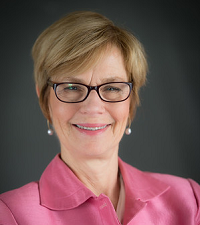by Barbara Merrill, CEO, ANCOR
 If you joined us for Monday’s launch of Case for Inclusion 2021, you heard Charlie Luke, Executive Director of the Utah Association of Community Services, observe that “while this country was built on local control, human rights are not a local control issue.” His comment was perfectly on point—the report this year focused on the challenges wrought by COVID-19, greatly exacerbated in states that failed to better support people and the providers that support them. We all loved his comment. We tweeted it with great enthusiasm, and I repeated it in my closing remarks. It was a much more eloquent way of saying what has been so obviously true—that the pandemic has laid bare the inequities of Medicaid’s state-federal partnership.
If you joined us for Monday’s launch of Case for Inclusion 2021, you heard Charlie Luke, Executive Director of the Utah Association of Community Services, observe that “while this country was built on local control, human rights are not a local control issue.” His comment was perfectly on point—the report this year focused on the challenges wrought by COVID-19, greatly exacerbated in states that failed to better support people and the providers that support them. We all loved his comment. We tweeted it with great enthusiasm, and I repeated it in my closing remarks. It was a much more eloquent way of saying what has been so obviously true—that the pandemic has laid bare the inequities of Medicaid’s state-federal partnership.
But his observation also prompted me to re-examine a comment I made in response to this week’s conversation playing out on the ANCOR Forum discussion titled “Array of Community Supports,” which, as of this writing, has elicited over 50 comments from members talking about the challenges in providing integrated but meaningful day supports for people. It started with Bonnie Brooks asking:
Hello Everyone! We are still wondering here in Maine if your state is putting pressure through guidance or other means on the elimination of day programs in favor of other ways of supporting people in the community. If your state has other ways of supporting people in lieu of day programs, is there a requirement for smaller ratios, including 1-1, and, if so, is there adequate reimbursement. We would love to hear of your challenges, barriers and successes. Thanks so much. Stay happy and healthy. Bonnie
And with that, the ACC was on fire!
In addition to members participating publicly, ANCOR staff and I received lots of private emails from members. Member after member shared extreme frustration with unintended outcomes produced by state HCBS Settings Rule compliance strategies, or by inadequate funding. A major theme centered on supports for people with the most significant disabilities. We also heard from lots of members who have made the transition and shared positive results.
I jumped in, shared the story about Barbara Edwards facing a partially hostile audience, and concluded my comment with the following:
In closing, I want to share that the final rule, as difficult as it is, was a dramatic improvement over what they originally proposed. There were iterations and drafts that would have made it much more prescriptive. But by leaving it more open ended—based on the experience of the individual, it left open the opportunity for community providers and states to experiment—sometimes to fail—but most importantly, to leave open the possibility that just as people are wildly diverse, so too can be the approaches to support them to live their best lives.
See my point? On Monday I was agreeing that human rights are not a local control issue, a day later I was observing that by leaving the HCBS Settings Rule less prescriptive, states are free to come up with their own transition plans—to figure it out themselves. And that’s what they are doing—some with gusto, others dragging their feet, not wildly enthusiastic about reforming a service delivery system that they may not think was broken.
Thus if you live in one state, your service provider may be required to document efforts to get you out in the community 80% of the time, while your counterpart in another state may be supported by a provider trusted to deliver results, or, perhaps that state may not have even started figuring out how they will comply with the rule. That’s what happens when you have a federal-state partnership that in this case has gone out of its way to “meet states where they are.” That is to say, there’s a recognition that the long arm of the federal government must tread cautiously, lest it risk a revolution.
But what is at the essence of the rule? Isn’t it that if an individual opts out of institutional services they deserve to exercise more choice and control over their lives? Subject to reasonable modification based on individual circumstances?
Just as the 13th,14th and 15th amendments to the U.S. Constitution outlawed slavery and the badges of slavery, and the Civil Rights Act recognized that human rights cannot be left to the states, the Americans with Disabilities Act and the Supreme Court’s decision in Olmstead made clear that human rights of people with disabilities could not be left to local control and private citizens.
But the rights of people with disabilities have been left to the states during this pandemic. We have seen wildly diverse responses from states. In some parts of this country providers were barely supported, while in other parts of the country states stepped up with retainer payments, waived regulatory requirements, and some even provided extra funding for hazard pay for DSPs. In some places people’s lives were valued, in others, forgotten.
The roll out of COVID-19 vaccines is another case in point from a national perspective, with an astonishing number of states that still haven’t prioritized people with I/DD and DSPs despite the large body of research demonstrating their significantly higher mortality rates. Local control has failed in too wide a swath in this country.
And what of semi-local control when it comes to the Settings Rule? Is it a contradiction? Is it time to push for greater federal control over I/DD HCBS services—or do we prefer the devil/partner we know? What is the best scheme for people with disabilities and their families?
Tell me what you think by sending me a note at [email protected], or jump back into the conversation on the ACC.

